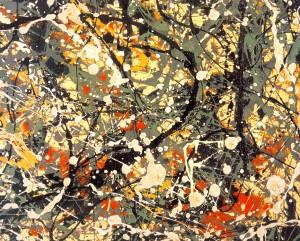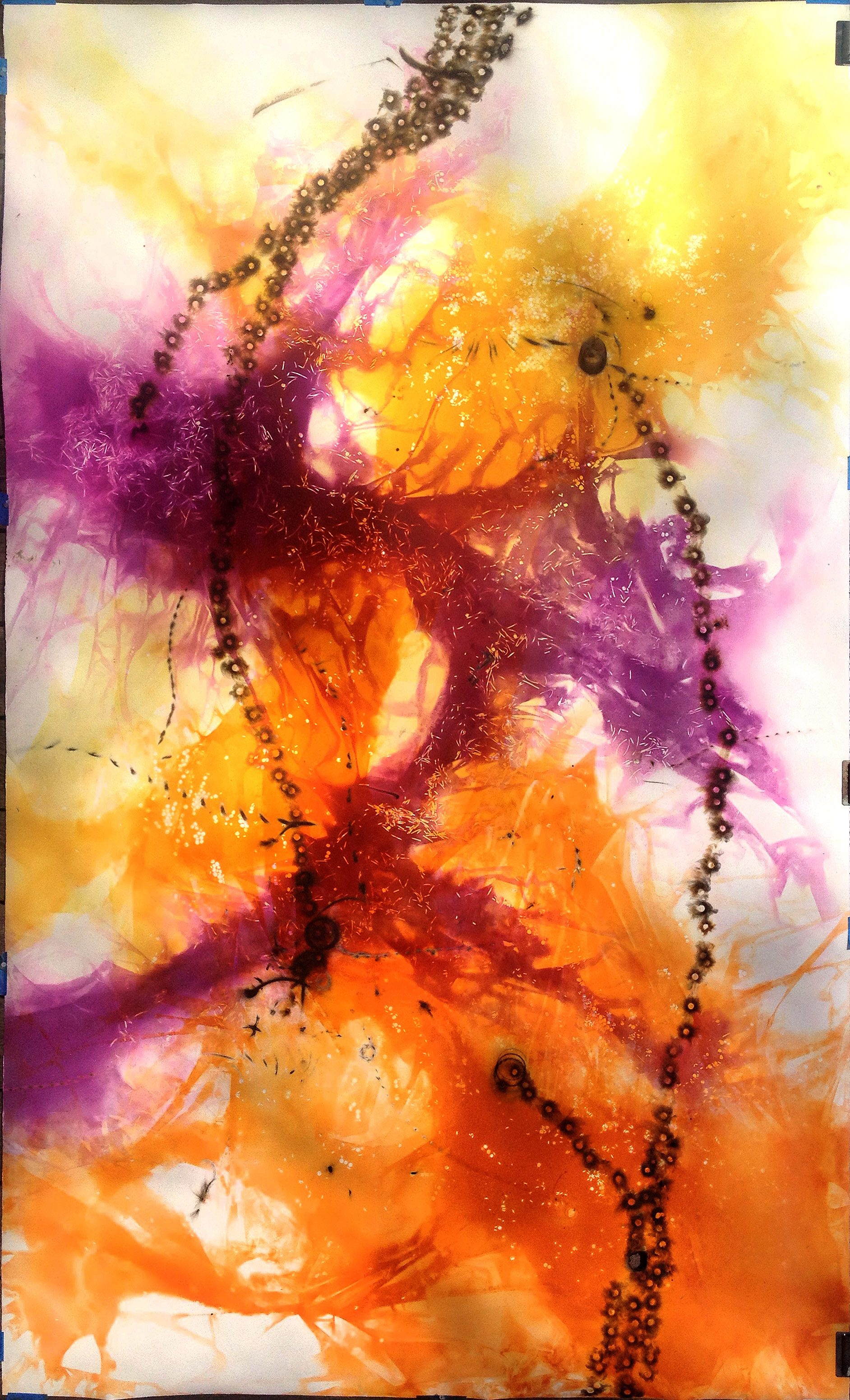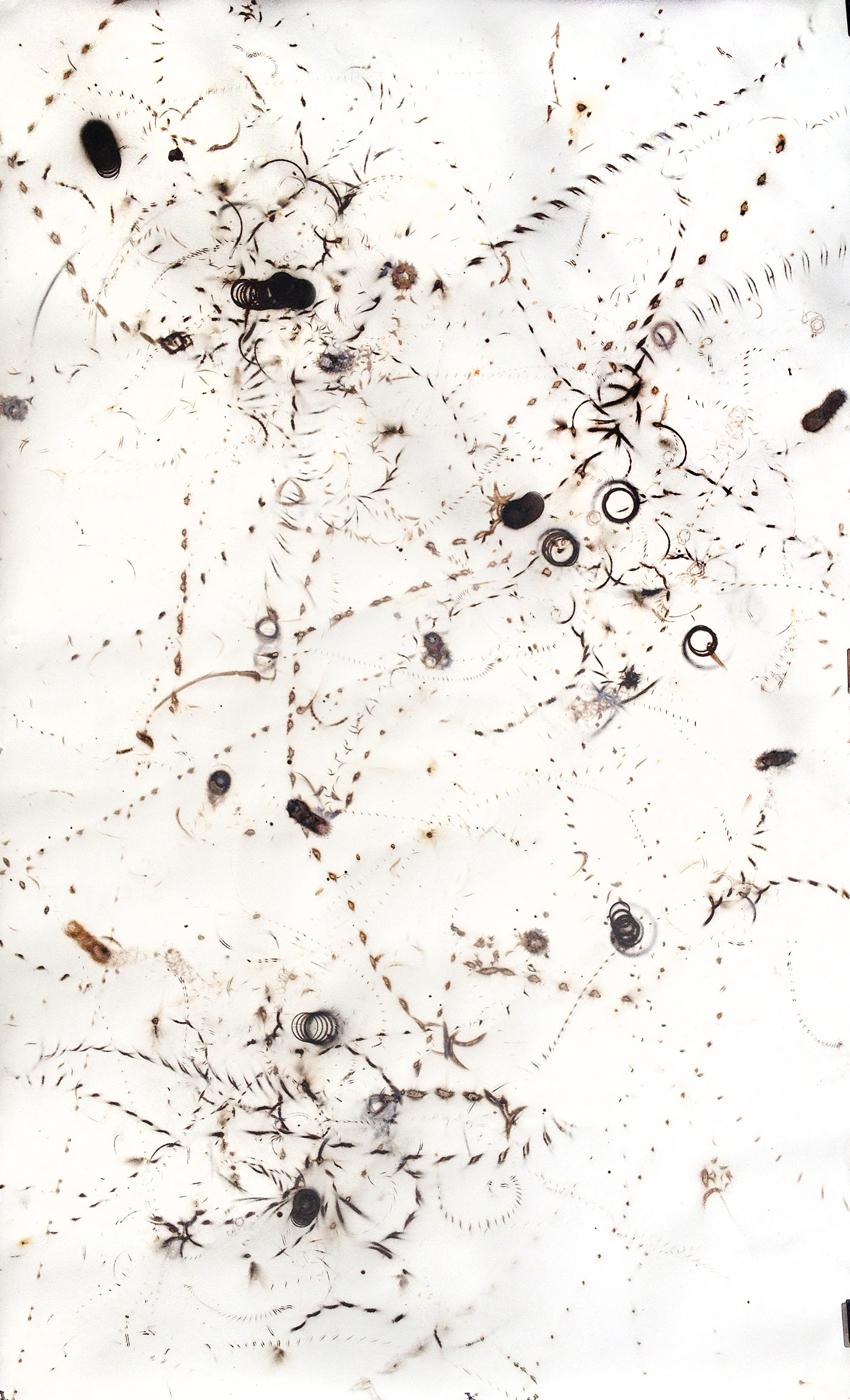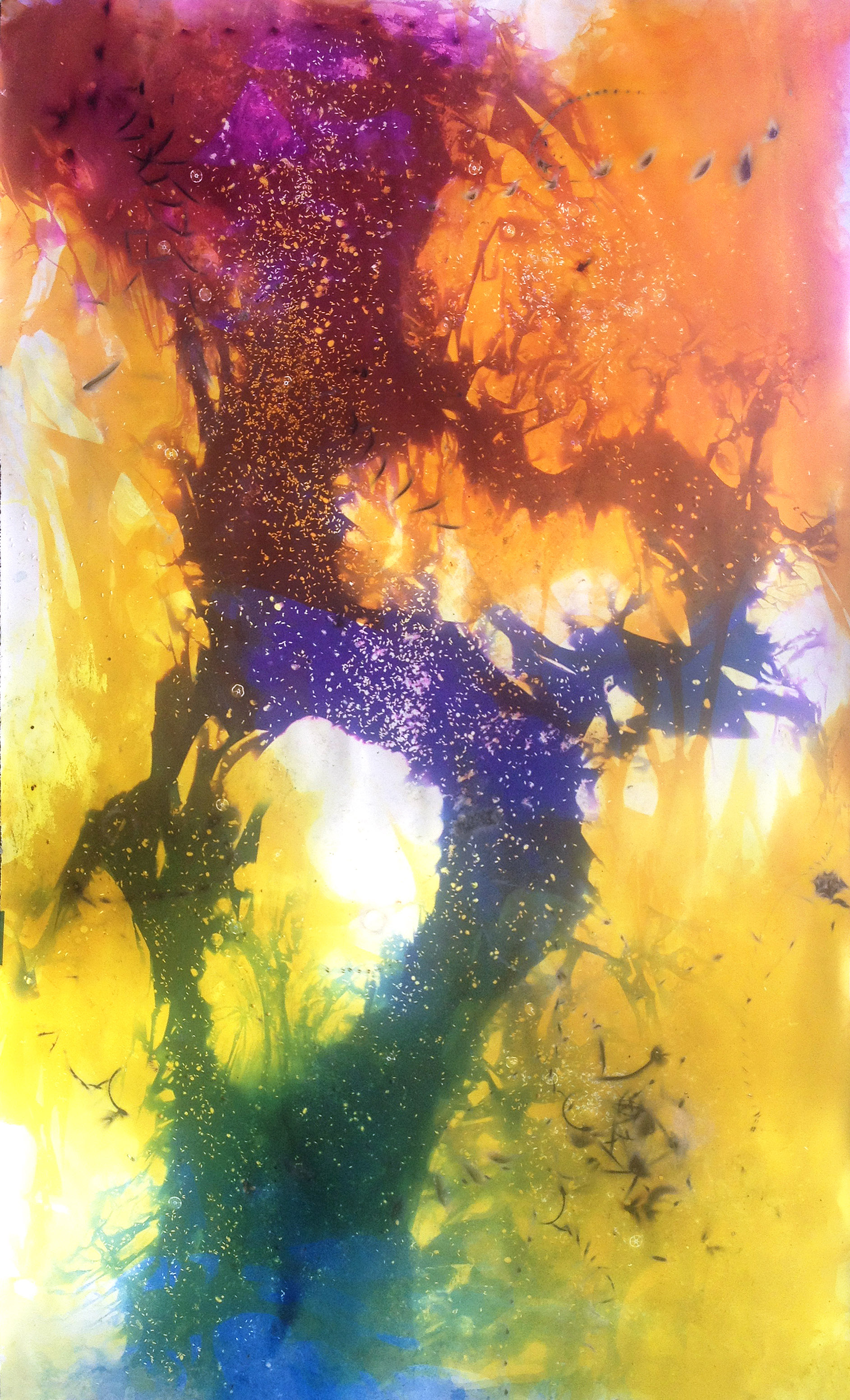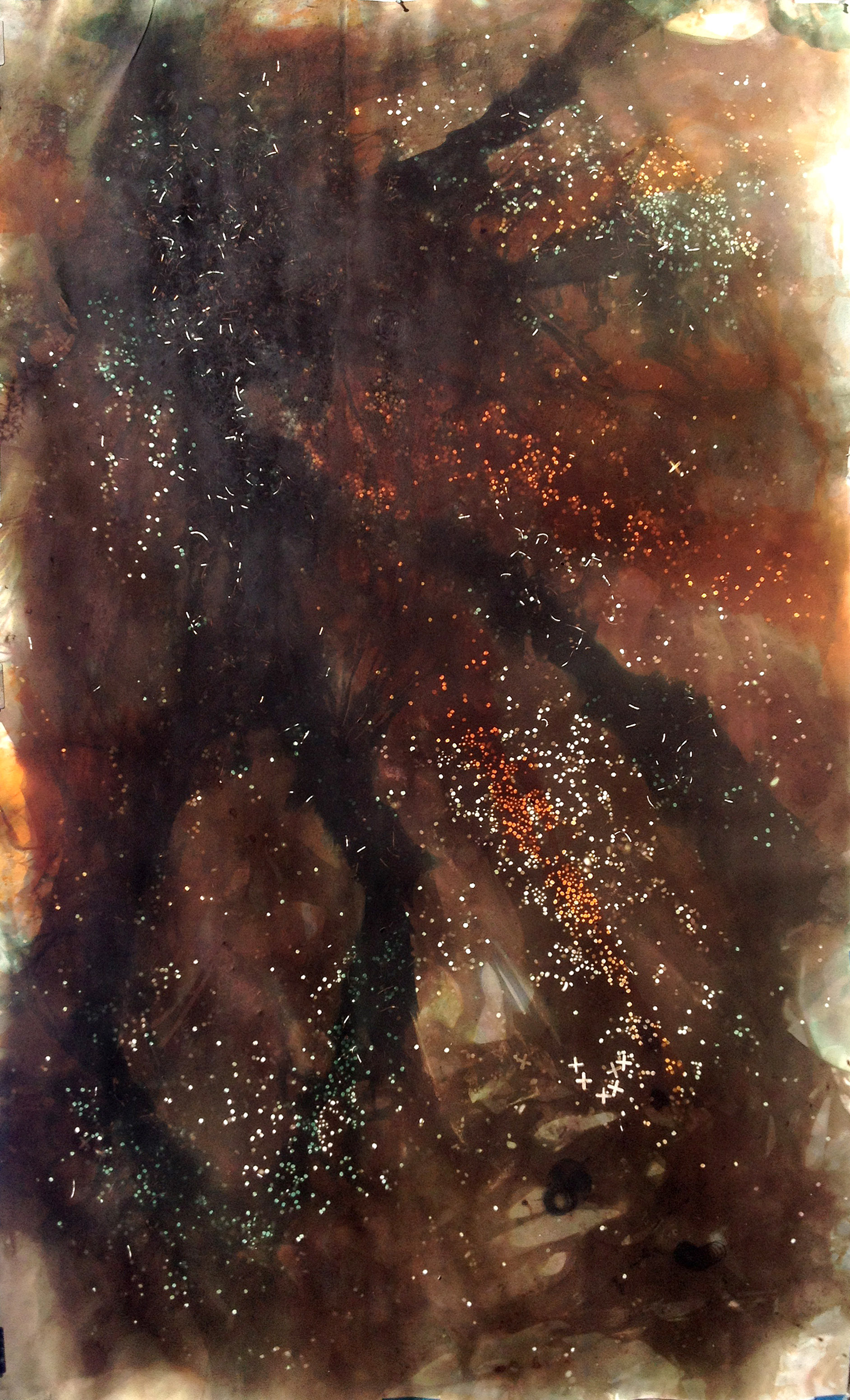Liberating Imagination: The Creative Process
Introduction
I invent nontraditional instruments and unconventional methods for creating art, derived from elements that celebrate liberties and activities that express a freedom of life found within them. Most everyone has his or her own set of actions and essentials that let one accent personal freedoms. Things like taking an evening stroll by the river, simply being in the great outdoors, cycling, playing music, having a beer with a friend at a favorite bar, shooting fireworks on Independence Day, enjoying an invigorating lunch with someone special, and barbecuing in the back yard with friends can all be considered excitements within my own freedom of choice and love for life.
I focus on processes that render results of happiness and contentment to those who enjoy them. I explore these alternative processes and convert them into imaginative ways for making visual art. This exploration balances my creative passion and ultimately restores it from years of client-based shared authorships endured under the commands of commercial art where the processes of making mass produced art can have a tendency to be restraining and have a factory-like production line for its artists. With a preconceived goal of the end product and being more concerned on achieving results of mass consumerism, this type of art has less concern for the artists’ freedom in the process of creating such art.
This is not anti-commercial art or an attempt to denounce my love and passion for design and illustration itself. This thesis work focuses on supporting the freedoms of my own imagination and choice through personal artistic exploration, which in turn liberates and facilitates what it truly means to be creative.
Historical and Theoretical Foundations
Artists of this concern should begin with critical theories that explain reasons why one may choose this path for a thesis study and end with the aesthetic theories of artistic processes that coincide with the efforts and results of how they might free their imagination from the co-authorships of commercialized art.
One should start with theories that have initiated a need for separation and departure from the confines of commercial art and its shared authorship. Marxist theory on Commoditization, in this case, of art, is a critical theory model for adding value-form or commodity to an object (Leitch 14-15); this is where commercial art is activated and utilized by businesses to help add value to their product(s) and situates an unavoidable shared authorship between an artist and his creations and the client’s requests.
These types of shared authorships will make some artists realize that their own personal goals and talents have become a series laden with commands and constraints; it is within this type of repressiveness and oppressions why one can painfully make this deduction: a commercial artist can choose his own liberation as a conceptual framework for an academic thesis.
Now to position the processes of how such artists would create art in response to a newfound creative freedom and apply the theoretical and aesthetic foundations of this thesis—being mindful not to completely commit to any one of the following movements or artists’ theories in their entirety because, if this happens, the graduate’s work will regress to creative confinement.
The primary theory that this liberated artist finds when orchestrating the nontraditional materials and unconventional methods is the Chinese philosophy of Taoism and its theory of Wu Wei—a creative quietude, better known as “the art of letting-be” (theeast.org). This artist finds Taoism, or more specifically Wu Wei, encouraging by letting go of and unlearning the preconceived knowledge of the analytical, socio-economic control in commoditized art where every aspect of the creative process has regulated and expected outcomes, letting the creations come to fruition essentially on their own by just letting things happen. In doing so, the artist frees himself of the multitude of issues in the
commercialized art world of socially pre-established value-form and will then know what it means to be truly creative.
Now one can next respectfully deconstruct and reconstruct the cultural movements of Surrealism and Abstract Expressionism. This thesis is in accordance with the technical and psychological methods of the Surrealist movement, in that the surrealists had developed techniques and methods that liberate the imagination and explore the unexpected. The student of this discourse also borrows techniques and aesthetic characteristics of Abstract Expressionism, so that the artifact shows no objectivity, no realism or any instantly recognizable images. These elements of technique and method from the artists in both genres leave their residuals declared as mere artifacts with their aesthetics a last priority and having a undeclared value-form. The artist welcomes these contrasts to the commercial art industry where everything is consciously thought out before it is created, and where the final product has top priority due to its preconceived value-form.
There are Surrealism and Abstract Expressionism aesthetics, techniques and methods that coincide with this work. Surautomatism is the practice of taking the surrealist creative production of automatism and pushing it to its most absurd limits by adding an element of hazard. This creative process takes the automatic drawing techniques produced by any artistic means and pushes them to a level of rigorously applied scientific procedures (icr.ro). These techniques leave randomness in the aesthetics that can be embellished with imagination by both the artist and the viewer. The techniques and methods used in Abstract Expressionism are congruent with the Surrealist ones in that there are prerequisites of automatism and unexpectedness, but the aesthetics, materials, and methods to which they apply pigment tend to be much broader.
There is artistic freedom in the fact that there is no standard look in abstract art and in each artist’s being able to express himself in his own unbound way, utilizing the abstract expressionist aesthetic concept of the All-over painting. This concept allows the artist to consider the formats’ edges as being equal with the final visual not having any indication of the correct positioning of the work. The abstract expressionist method of Action Painting situates a premise for the physical act of creating art from instruments made from enthusiasms found in life (artlex.com).
With this innocent departure from the commands of commercial art and with the imaginative practices and unexpected techniques of the Surrealist and Abstract Expressionists in mind, one approaches these creations with a sense of orchestrating a visual symphony, with time spent outside the studio, unbridled from rule and expectations, not initially concerning one’s self with the end results by following an artistic Wu Wei and choosing media and instruments that conduct abstract and surprising outcomes. A hazardous medium like that of fireworks (colored smoke bombs, sparklers, spinners, and snakes) is something that can help develop abstraction and color values. As a basis of his or her graduate work, this Surautomatism of such a medium will give the desired feeling of letting go of control, and merely giving a personal choice of artistic guidance to the aesthetics through the use of the fireworks. This graduate can use various Spinners and Snakes (i.e., fireworks) as an alternate means for conducting irreproducible and automatic marks of beautiful linear quality. The artist can explore the use of invigorating media like foods and seeds (ice, split peas, rice, lentils, spaghetti, fettuccini, beans, and grass seed) and various found elements to help create Automatism in the process as well as create texture. The local grocery store down the street, the fireworks stand out on the highway at the edge of town, and the outside environment in which the artist exists all have now become the art supply stores. The feeling of not having to spend huge amounts of money on the next software upgrade, latest computer, and printing of such mass art is a relief of the financial stress one has when dealing with the commercial art industry. It is gratifying for the graduate artist to know that, within this thesis process,
he does not have to spend hours behind the computer at a desk or in a studio under artificial light, but instead outside in the fresh air and in the natural light of the sun. The artist does not have to abide by the advertising rules and make client initiated edits to his creations, thus leaving the final value-form and orientation open for a personal application. It is now an art that is true to the artist and not tainted by the consumerist world around him in which a commercial artist has become so accustomed; each piece of art is conceptually resolved after the moment the artist lights the fuse and steps away allowing
the medium to naturally record its impression. For the viewer, audience, or critic to only apply cognitive visual analysis to this is to not grasp the concept in its entirety, negating the holistic beauty of the work.
World history has recorded and archived these cultural movements of Taoism and its concept of Wu Wei, Surrealism, and Abstract Expressionism. The Philosophy of Taoism and Wu Wei, date back to 4th century BC. Taoism is fundamentally based in the classic Chinese text Laozi. Tao (pronounced “Dow”) is a Chinese concept that signifies way or path. Its traditional philosophy implies the way that nature and the universe work. The true Tao cannot not be spoken or defined, only experienced, due to the ineffable qualities it is considered to have. The classic Chinese text Laozi (or Lao Tzu) was written by the sage with the corresponding name, Lao Tzu, meaning “Old Master.” The text often referred to as the Tao Te Ching (pronounced “Dow De Jing”) contains the philosophies of Taoism and Wu Wei and has been translated by many scholars throughout the years (taoistarts.net). One translation that supports this thesis work, aids in the art of letting-be, and helps conquer ones fear of the unknown or unexpected is stated as: “The Sage is occupied with the unspoken and acts without effort. Teaching without verbosity, producing without possessing, creating without regard to result, claiming nothing, the Sage has nothing to lose (theeast.org).”
Surrealism was officially founded in Paris around 1924. After WWI it developed into a
response to excessive rational thought and bourgeois principles that the artists of that region believed brought the war upon them. The leader of this Surrealist movement, André Breton (1896–1966) defines it in his manifesto accordingly: “Pure psychic automatism by which it is intended to express, either verbally or in writing, the true function of thought. Thought dictated in the absence of all control exerted by reason, and outside all aesthetic or moral preoccupations (tcf.ua.edu).”
With Surrealism as its predecessor, Abstract Expressionism was established in New York around 1946 as an American movement after WWII. It first appeared in Germany in 1919 as German Expressionism then later resurfaced in America. This was an artistic development that had a particular emphasis on the creative, spontaneous act. It was an intuitive technique that produced a non-formal work chiefly improvisational, unpremeditated, and apparently random. Abstract Expressionist Vostanik Manoog Adoyan (also known as Arshille Gorky 1904–1948) best describes it as follows: “Abstraction allows man to see with his mind what he cannot physically see with his eyes . . . Abstract art enables the artist to perceive beyond the tangible, to extract the infinite out of the finite. It is the emancipation of the mind. It is an explosion into unknown areas (artlex.com).”
There are artists and theorists that validate the historical evidence of the Surrealist methodologies, and Abstract Expressionism aesthetics that set the precedence for this thesis of creatively orchestrating traces of human excitements. One of the most enthusiastic surrealists about “Automatism” or “Automatic Drawing” was André Masson (1896–1987); his drawings called Automatic Drawing (Fig. 1) and Femme Allegories (Fig. 2) show the consequences of this technique. The Romanian Surrealist theorists, poets and artists Gherasim Luca (1913–1994) and Dolfi Trost (1916–1966) published a statement in 1945 about “Surautomatism.” The statement published in the Dialectique de la Dialectique says: “We resumed the issue of knowledge through image (Trost, The Navigable Profile), by establishing a net distinction between the images produced with artistic means and those due to scientific techniques, strictly applied, such as acts of hazard and automatism. By pushing automatism to its most concrete and absurd limits (surautomatism, the simulacrum-talisman), by uninterruptedly objectifying hazard and forcing it to give up its rare item quality originated in the discovery of the object found (the object objectively offered, entoptic graphomania), we drive away the unbearable idea of not being able to capture it at all time (icr.ro).”
Jackson Pollack (1912–1956) was the most notable Abstract Expressionist that dealt with the methods of “Action Painting” and “All-over Painting.” His paintings called Full Fathom Five (Fig. 3) and Number 8 (Fig. 4) make clear use of such technique and aesthetic. Pollock offers insight to his process: “Having the canvas on the floor I feel nearer, more a part of the painting. This way I can walk around it, work from all four sides and be in the painting, similar to the Indian sand painters of the West. Sometimes I use a brush but often prefer using a stick. Sometimes I pour the paint straight out of the can. I like to use a dripping fluid paint. I also use sand, broken glass, pebbles, string, nails, or other
foreign matter (nga.gov).”
Contemporary Context
This concept is largely influenced by the genre of Process Art, an open and modern form of contemporary art that began in the mid 1960s. The most important influences of this genre are its emphasis on the creative processes and actions in time taking precedence over the outcome; and the liberating qualities from the use of nontraditional materials and unconventional methods to conduct actions that record irregular and erratic arrangements, random occurrences, and improvisations (guggenheim.org). Again, the student, or postmodernist, utilizing this thesis, must deconstruct and reconstruct contemporary movements and only adapt elements that seem to be most fitting to his process and not adhere every aspect of each movement to his work.
The visual notes make mention of the Process Art genre because its core meaning is in the process of noting actions and elements of stimulated human life and the final residual being a historical composition of that symphony. It is not a description of a stylized body of work, but a method in which one thinks about how to actually orchestrate, conduct, and record the stimulations. With emphasis being on the recording of elated life and freeing one’s imagination and creativity from the shared authorships and expectedness of client-based art, it situates the efforts as being both psychologically and physically process oriented. Through a personal psychological process, he frees himself from the propositional constraints of commercial art by letting personal inspiration and freedom of choice drive his ambitions to be creative. He is exulted in a process that physically frees him from the environment of expected techniques and materials used in commercial art.
There are a few artists that correlate to this thesis work who also draw attention to these techniques and methods of Process Art and are in close proximity to this thesis’ concept. These are Rosemarie Fiore, Cai Guo-Qiang, and Tim Knowles, who have, at their core, processes that are of equal or more importance than that of their final results. Rosemarie Fiore (born 1972) has a wonderful grasp on the importance of the artistic processes and inventing instruments to make art. Her processes are varied, from the use of Pinball machines games, amusement park rides, and fireworks. While the use of Fireworks in her Smoke Paintings may reflect its aesthetics, it is her use of Pinball games and Amusement Park rides that complement this thesis concept the most. Her unconventional use of the Evel Knievel Pinball machine as a method to record the exhilarating passage of time while playing a game is captured in her pieces aptly named Evel Knievel Pinball Paintings (Fig. 5 and 5a). Her residuals called Good-Time Mix Machine: Scrambler Drawings (Fig. 6 and 6a) are another great example of her unconventional methods of noting the thrilling moments of human life from the use of an amusement park ride. Another contemporary artist that has a focus on recording time and process is Cai Guo-Qiang (born 1957). His work is more conceptually based in reflecting issues in his personal heritage than the stimulations and freedoms of the human life in general, but his project called Project for Extraterrestrials No.10 (Fig. 7) where he lit a six-mile long fuse, that took approximately 15 minutes to burn in its entirety, is a great example of highlighting the artistic process and recording actions in time with less of a concern for its final results. His gunpowder works like the one called Test With Toy Fireworks (Fig. 8) promote a spontaneity that confronts the suppressive and controlled social climate of his native land, China, and reflects the efforts of this thesis concept of the departure from the controlled and oppressive conditions of commercial art. This same gunpowder drawing fits aesthetically with the records of this concept as well. Tim Knowles (born 1969) is an artist that makes process-oriented notes that have methods that denote elements of freedom of the artistic process and are not concerned with their aesthetic outcomes, thus, reflecting the art of letting things happen; his Tree Drawings (Fig. 9 and 9a) wonderfully represent this and relate to the unconventional processes orchestrated in this thesis where the artist relies on the process of the materials and Wu Wei to conduct
his symphony of marks, color values and textures.
The Work
Choice, Release, Adventure, and Emancipation are a series of works done through the experience of using an emancipated imagination and recording abstract compositions with nontraditional materials and unconventional methods. Without any rigid idea of the end results, coauthorship with a client or demands from commoditization, they were composed within the art making process during a particular moment in time. Each piece in this series was created while immersed in the exciting moment of shooting fireworks and invigorating methods of smoking used during barbecuing; created outside in the fresh air away from the computer and confines of the studio. The nuances of the unexpectedness of this process and these materials not only drove the artist to continue to make these pieces of art, but also to layer, build, and push the basics in aesthetics until its creator felt it was visually satisfying and successful.
The core concept of this thesis stops the moment that the materials have finished their exciting adventure. The artist relied on the Wu Wei to let the materials do as they may and did not try to completely understand the technique of trying to apply them. This state of letting things happen is beautifully liberating to the artist’s creativity. Arranging them side-by-side in a series allows them to compliment each other’s individuality as the viewer investigates them.
Artist Statement
I orchestrated each piece as a collaboration of nontraditional materials and unconventional methods derived from activities and elements that can express independence and support life within it. In this series, I have re-contextualized the residual effects of shooting fireworks along with a particular smoking method used for barbecuing and converted them into inventive instruments to conduct a visual symphony of marks, color values, and textures with which I intuitively compose abstract aesthetics. These aesthetic notes result from creative processes done outside of the studio and away from the computer. This shift is an innocent departure from years of shared authorships and conventional processes that I have endured under the commands of commercial or client-based art. The great outdoors and the sun have now become my studio and light source. The fireworks stand at the edge of town and local grocery stores have now become my art supply stores. I feel this unique approach liberates my imagination and its creations, which enables me to explore my art spontaneously with a welcomed sense of personal artistic freedom.
Materials and Process
All four pieces where orchestrated outside and on the ground. Each document is 4.5ft by 7.5ft, recorded on Fabriano Artistico paper. Choice (Fig. 10) was created using the residual effects of lighting multiple fireworks like that of Colored Smoke Bombs (Yellow, Orange and Magenta), Spinners, and Snakes. Textures and random patterns were created using dried foods (Split Green Peas, Fettuccini, and Rice). Release (Fig. 11) was created with the residual effects of lighting only the fireworks called Spinners. Adventure (Fig. 12) was created with the residual effects of lighting Colored Smoke Bombs (Yellow, Orange and Magenta and Blue) and Spinners. Its textures and random patterns were created using dried foods like that of Pasta, Assorted Beans, and Rice. Emancipation (Fig. 13) was created with the residual effects of lighting Spinners and over forty Colored Smoke Bombs (Yellow, Orange, Magenta and Blue). In all instances, the Smoke Bombs
where sealed under a plastic drop cloth and lit to smoke the art, which resembles a certain method of smoking barbeque. Letting the wind and humidity react with the smoke resulted beautiful marks and color values. The dried foods where dropped from above and allowed to fall to the surface and bounce around to their final stopping place. The Spinners were placed and lit in a particular area but were delightfully spontaneous in which direction they would end up making their mark. The Snakes were lit and then pushed along the surface with a stick.
Conclusion
The process of allowing the designation of wall space at Nesin Hyde Gallery to come to me without any forced or preconceived desire fits with the theories of Wu Wei. Displaying each piece, suspended from the wall and frameless, fits with the liberation ideology, as they seem to be floating free from confinements and support the contemporary art genre through this presentation. Although they are arranged in, as I feel, their strongest compositional orientation the space would allow. Each painting visually records and maintains support of the abstract methods and concepts. I feel that this series successfully presents the collaborations of nontraditional materials and unconventional methods derived from activities and elements that can express independence and promote life within them. This process successfully liberates my imagination, with its residuals offering the viewer’s imagination a freedom to explore.
Bibliography
Leitch, Vincent B.. “introduction.” The Norton anthology of theory
and criticism. 2nd ed. New York [u.a.: Norton, 2010. 14-15. Print.
“Wu wei”, an important concept of Taoism, that involves knowing when to act and when not to act | The East.” The East. n.p., 30 Oct. 2010. Web. 27 Feb. 2014. <http://www.theeast.org/?p=716>.
“Taoism And The Taoist Arts.” Taoism & The Taoist Arts. n.p., n.d. Web. 27 Feb. 2014. <http://www.taoistarts.net/taoism.html#his>.
“First Surrealist Manifesto.” First Surrealist Manifesto. n.p., n.d. Web. 27 Feb. 2014. <http://www.tcf.ua.edu/Classes/Jbutler/T340/
Luca, Gherasim, and Dolfi Trost. “The Dialectic Of Dialectic.” Institutul Cultural Roman. n.p., n.d. Web. 3 Mar. 2014. <http://www.icr.ro/bucharest/the-romanian-avant-garde-03-1999/the-dialectic-of-dialectic.html>.
“ArtLex Art Dictionary.” ArtLex Art Dictionary. Michael Delahunt, n.d. Web. 3 Mar. 2014. <http://www.artlex.com/>.
Moore, Barbara, and Donna Mann. “NGA pollock feature process3.” NGA pollock feature process3. n.p., n.d. Web. 3 Mar. 2014. <http://www.nga.gov/feature/pollock/process3qt.shtm
“Guggenheim.” Collection Online. N.p., n.d. Web. 5 Mar. 2014. <http://www.guggenheim.org/new-york/collections/collection-online/movements/195233/description>.
Appendix
Slides of Historical and Contemporary Artists’ Theory
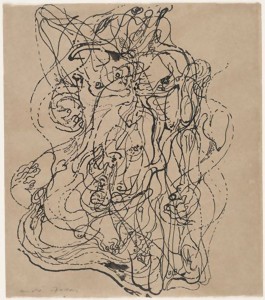
Figure 1. Automatic Drawing, Masson
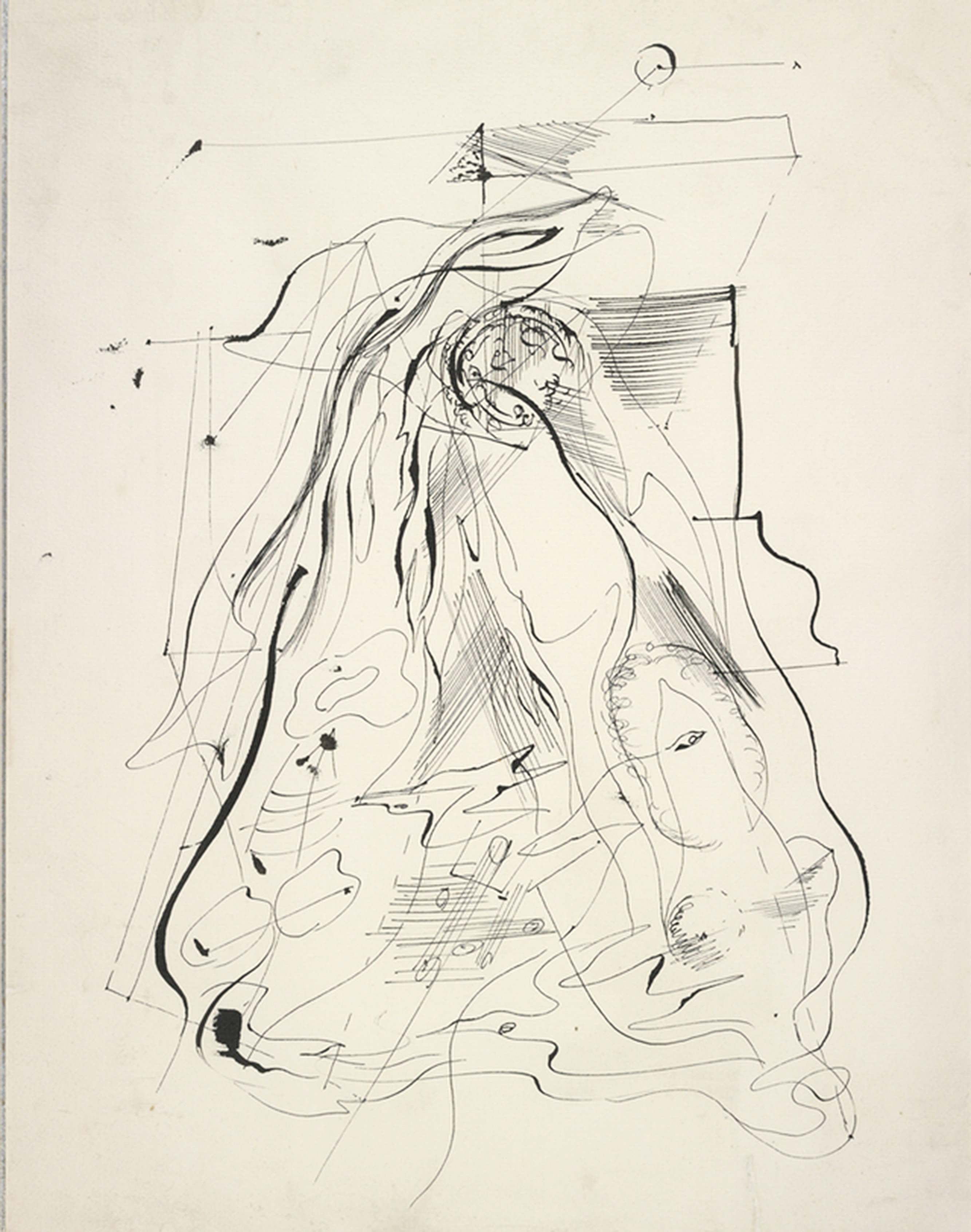
Figure 2. Femme Allegories, Masson
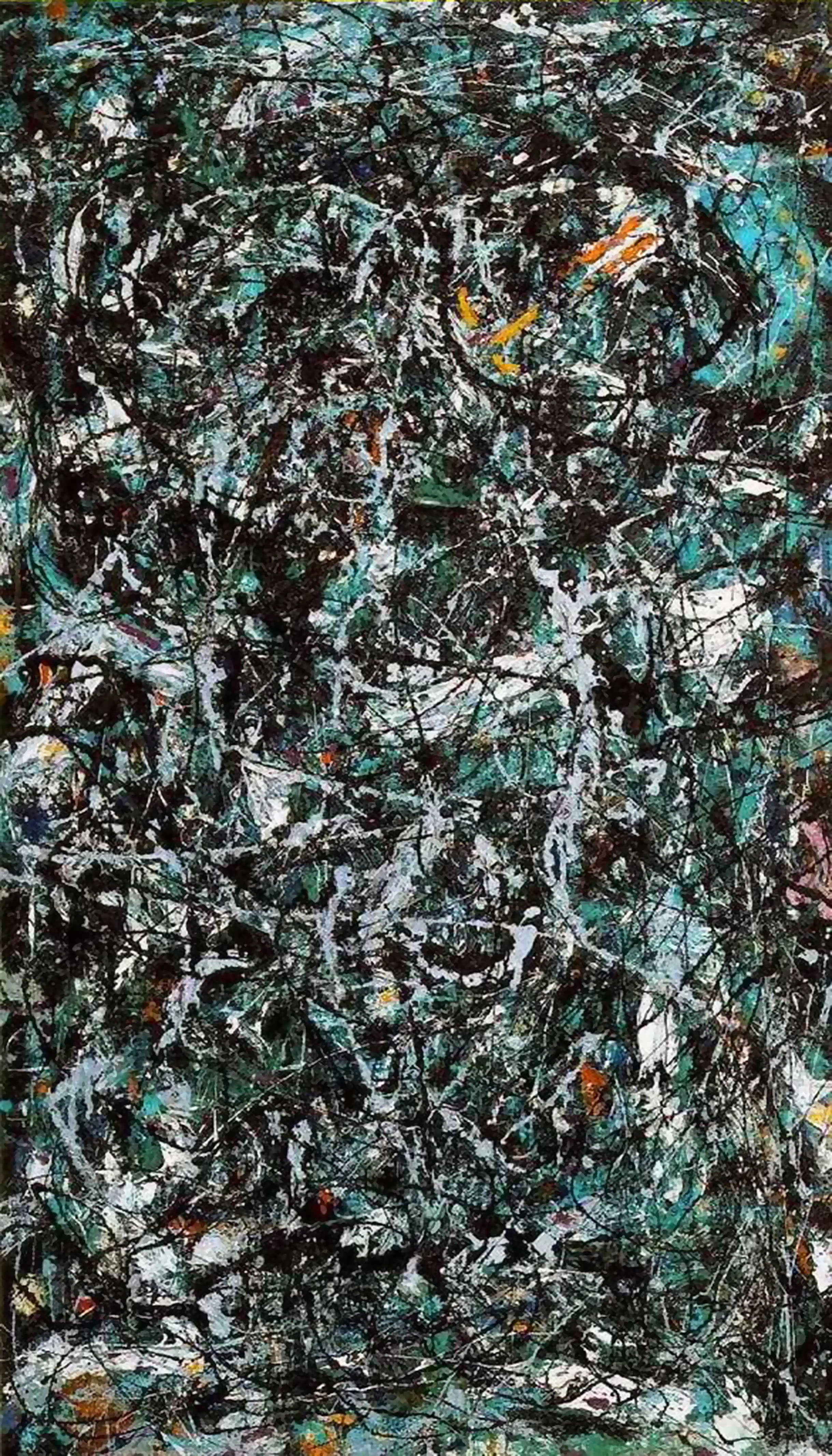
Figure 3. Full Fathom Five, Pollock
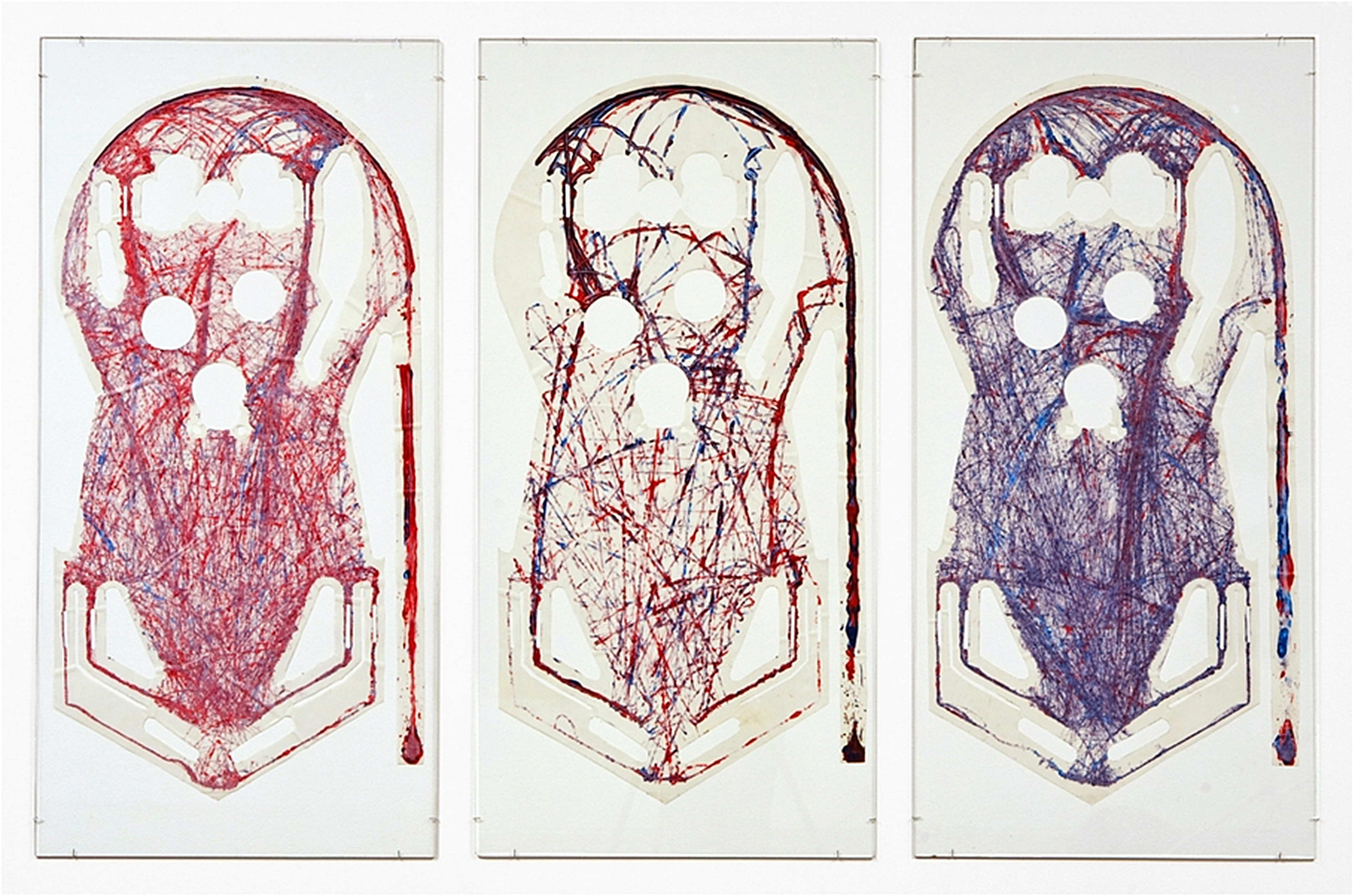
Figure 5. Evel Kenievel Pinball Paintings, Fiore
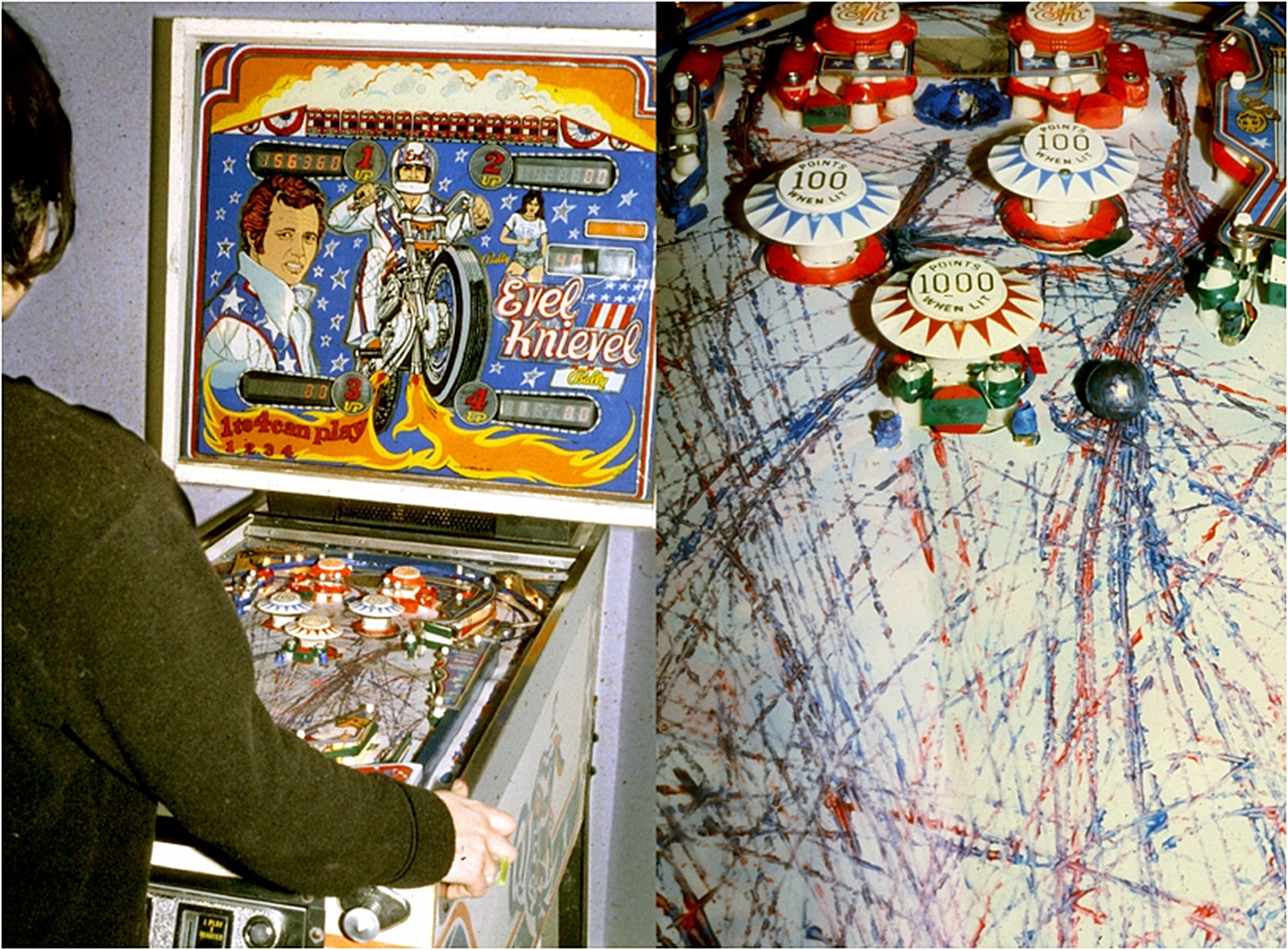
Figure 5a. Evel Kenievel Pinball Paintings, Fiore
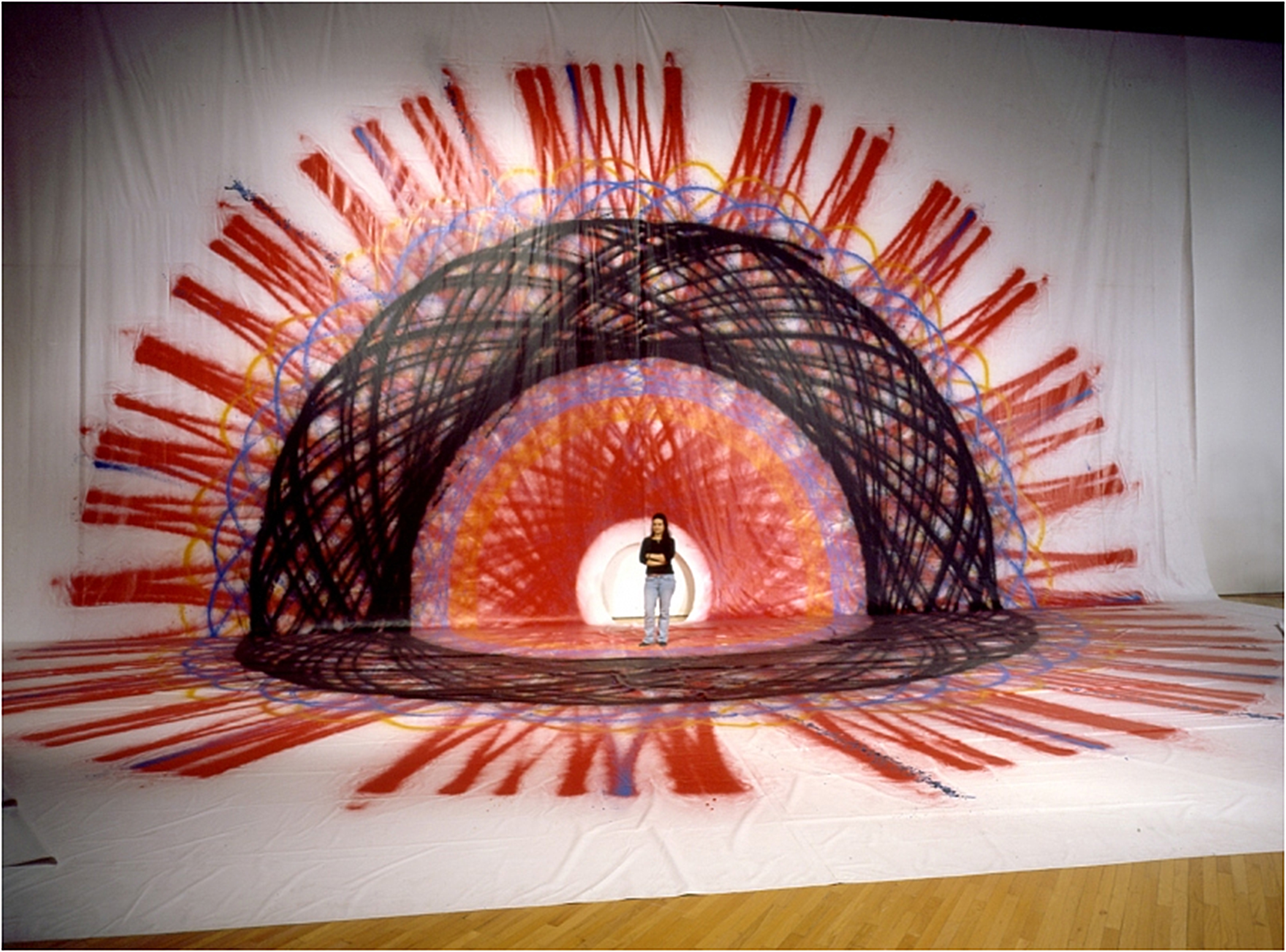
Figure 6. Scrambler Drawings, Fiore
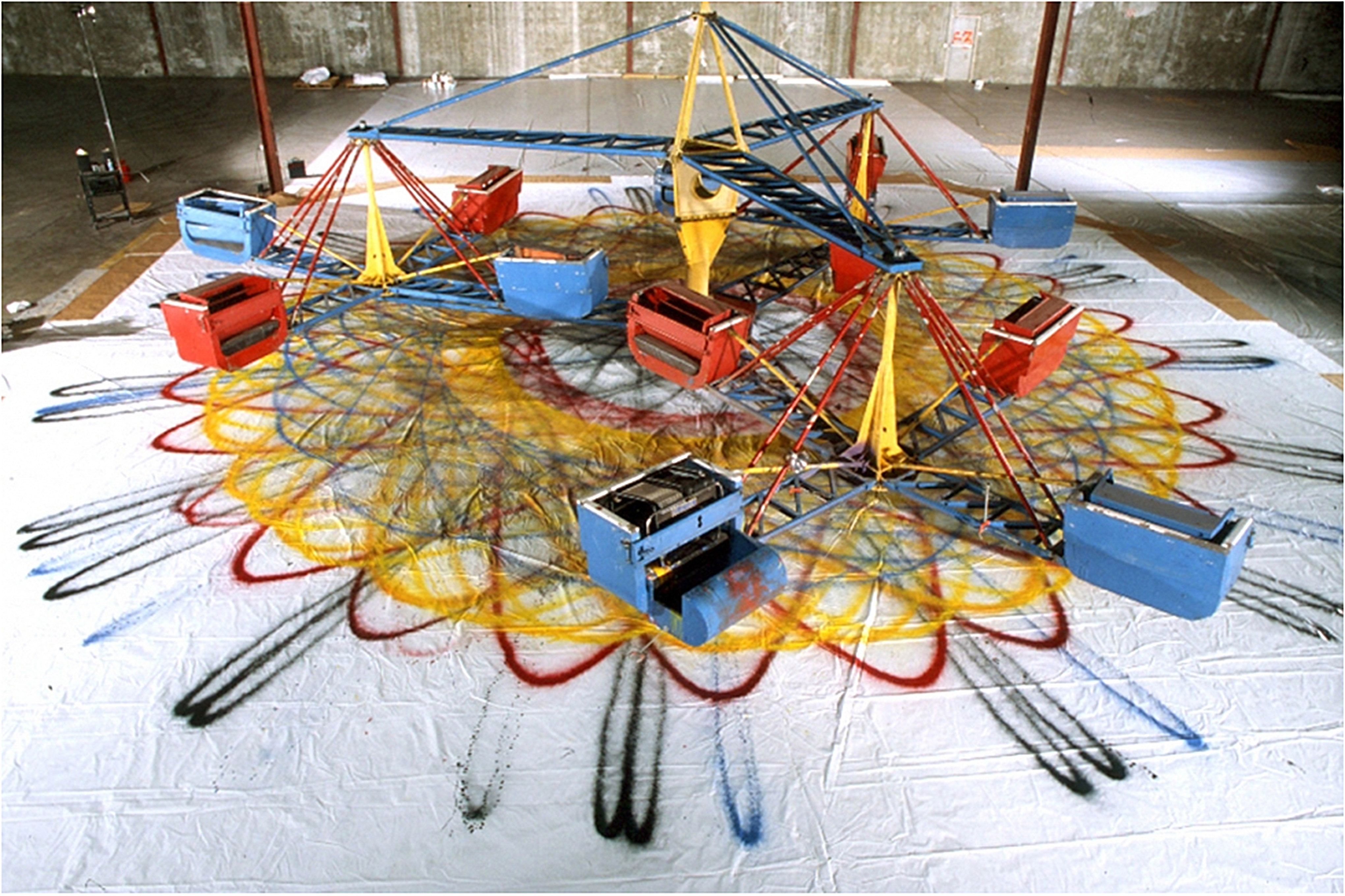
Figure 6a. Scrambler Drawings, Fiore
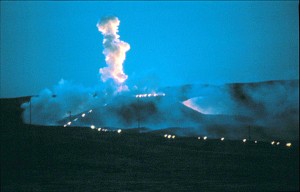
Figure 7. Project for Extraterrestrials No.10, Guo-Qiang
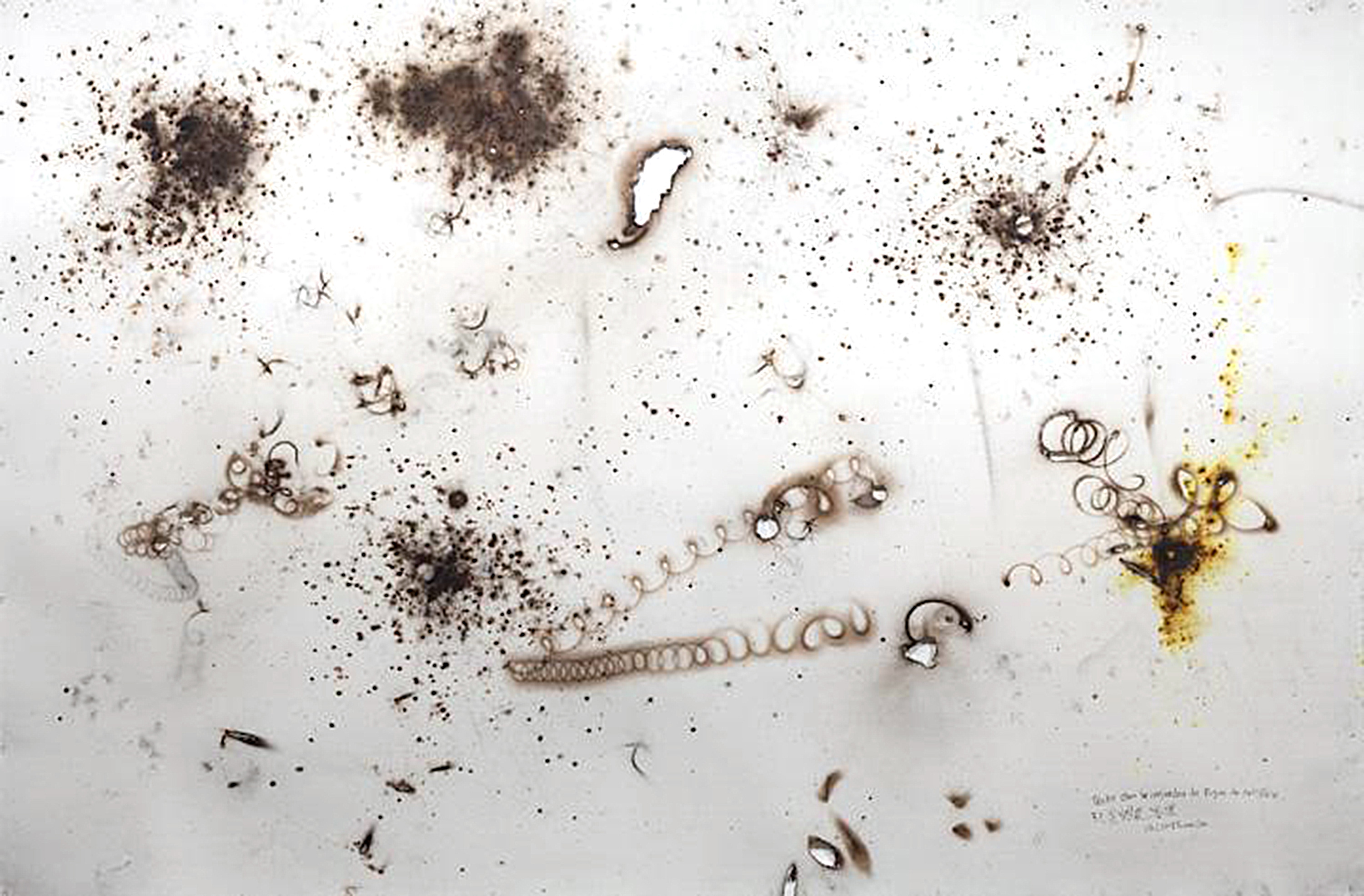
Figure 8. Test With Toy Fireworks, Guo-Qiang
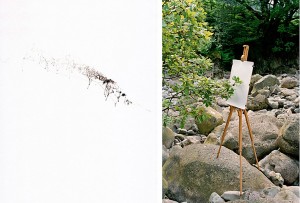
Figure 9. Tree Drawings, Knowles
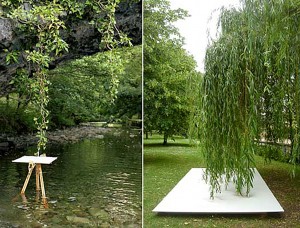
Figure 9a. Tree Drawings, Knowles
Photographs of Thesis Work

